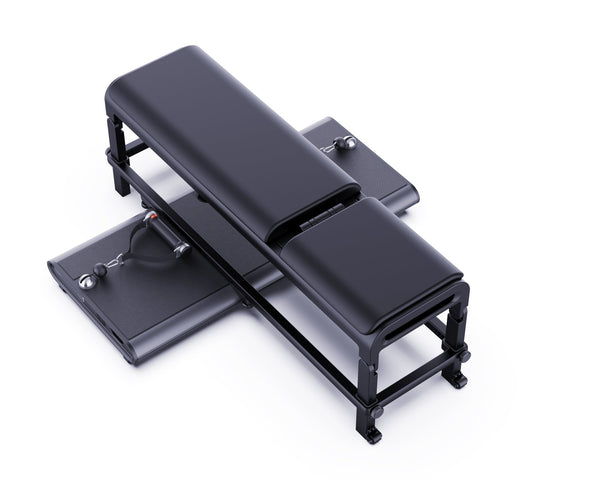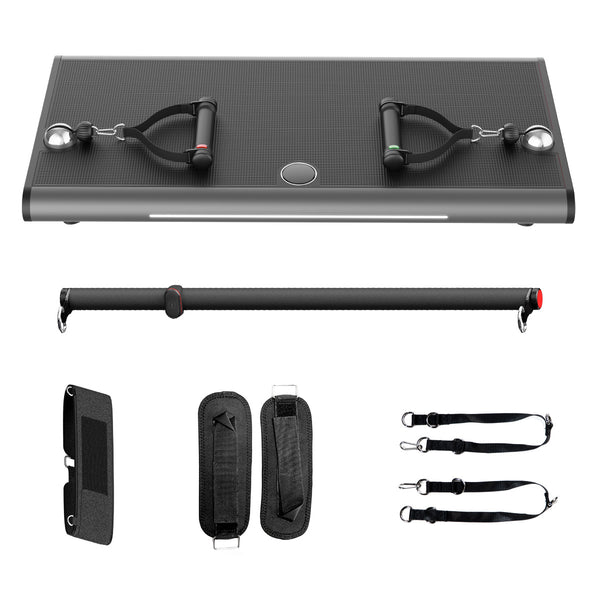Pair some text with a product to highlight features.
4 Resistance Different Modes
Multiple training modes, on-demand switching fat burning, shaping, muscle building, multi-dimensional to meet the fitness needs, and efficiently enhance the training effect; suitable for more people to use, beginners, professional fitness enthusiasts and so on;




Why Choose INNODIGYM P1
-
![]()
MINIMAL DESIGN-6CM/2.4 INCH
Adopting ultra-thin design and aluminum alloy integrated die-casting
-
![]()
Stereo 5w Blueto-Oth Amplifier
The Stereo 5W Bluetooth Amplifier delivers powerful sound in a compact design. Enjoy wireless audio streaming with Bluetooth connectivity.
-
![]()
5.0 Disc Type Servo Motor
Experience unmatched precision with Innodi P1, powered by our 5.0 Disc Type Servo Motor. Elevate home workouts with this advanced, durable tech.
-
![]()
Security Protection Mechanism
Multiple Protection Mechanisms Enabled by Advanced Artificial Intelligence: Enhanced Security Features
-
![]()
Safety Button
Safety buttons on both handles and the bar. It act as afailsafe mechanism,instantly releasing the weights when the load becomes challenging.
-
![]()
Aerospace Materials
levate your home gym with the Innodi P1 series, utilizing aerospace materials for unmatched strength and longevity.
Shoulder workouts are essential for anyone looking to enhance upper body strength and improve overall fitness. Strong shoulders not only contribute to a well-defined physique but also play a crucial role in everyday activities and athletic performance.
Importance of Shoulder Workouts
Engaging in targeted shoulder workouts helps build muscle, increase stability, and prevent injuries. The shoulder joint is highly mobile but also susceptible to strain, making strength training vital for maintaining joint health. By focusing on the shoulder muscles, you can enhance your performance in other exercises and sports.
Key Shoulder Exercises
-
Overhead Press
The overhead press is a foundational exercise for shoulder strength. It targets the deltoids while engaging the triceps and upper back. Whether using dumbbells or a barbell, this movement is excellent for building mass and power. -
Lateral Raises
Lateral raises effectively isolate the lateral deltoids, helping to widen the shoulders and create a more balanced upper body appearance. This exercise can be performed with dumbbells or resistance bands for added variety. -
Front Raises
Front raises target the anterior deltoids and are perfect for developing the front of the shoulder. Using either dumbbells or a weight plate, this exercise can be easily incorporated into your shoulder workout routine. -
Face Pulls
Face pulls are excellent for promoting shoulder stability and improving posture. By targeting the rear deltoids and upper back, this exercise helps balance the muscles around the shoulder joint, reducing the risk of injury. -
Push-Ups
While often associated with chest workouts, push-ups also engage the shoulders significantly. They help build functional strength and can be modified to target the shoulders more intensely by adjusting hand placement.
Tips for Effective Shoulder Workouts
- Warm-Up Properly: Always start with a dynamic warm-up to prepare the shoulder joints and muscles for more intense movements.
- Focus on Form: Maintain proper form throughout each exercise to prevent injury and maximize effectiveness. Consider working with a trainer if you’re unsure about your technique.
- Incorporate Variety: Mix different exercises and rep ranges to keep your workouts engaging and challenging.
- Listen to Your Body: If you experience pain (not to be confused with muscle fatigue), stop the exercise and assess your form or consider consulting a professional.
Digital Gym


INNODIGYM P1 PLUS


INNODIGYM P1 MAX


































